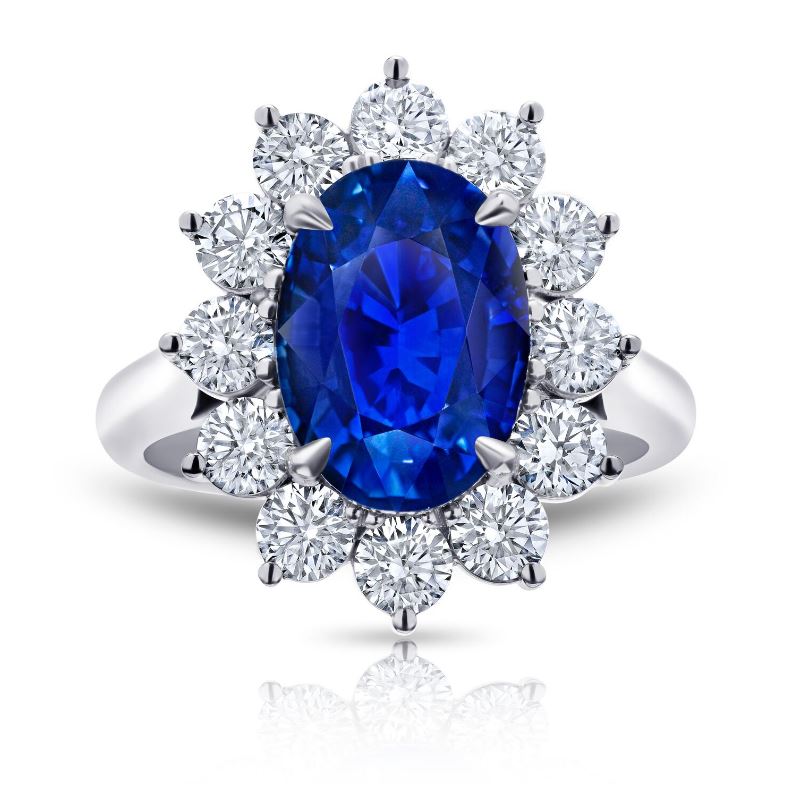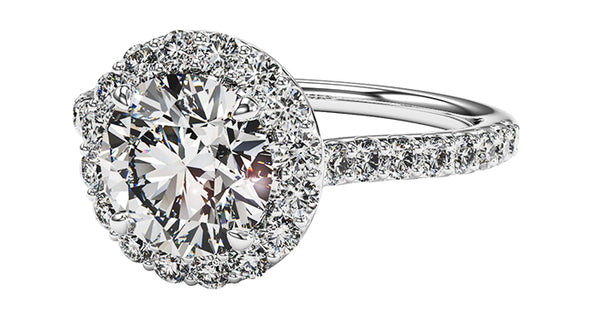The History of Halo Engagement Rings

Adored by brides, halo engagement rings are a signature style of Ritani. Halo rings feature a central round stone surrounded by a “halo” of smaller diamonds or gemstones. This setting not only looks gorgeous, but it also offers benefits that many couples desire. For example, halo settings can make a center stone look up to half a carat larger, which means you can choose a smaller stone without sacrificing perceived size. Beyond its good looks, the halo engagement ring was inspired by architecture and art movements. Have you ever wondered about the history of the halo engagement ring?
History of the Halo Ring
The halo engagement ring has exploded in popularity in recent years. Its origins can actually be traced as far back as the early Georgian era (1714-1837) in Europe, where round diamonds or pearls only slightly smaller than the center stone were used. Halo engagement rings saw an increase in popularity in the Victorian era (1837-1901), which often had colored gem center stones to imitate flowers.

What we consider to be the classic halo setting of today has its origins in the Art Deco Era of the 1920s. The Art Deco movement included an emphasis on symmetry and geometric patterns. The concentric circles surrounding a center stone were perfect for Art Deco aesthetics. Although the practice of surrounding a center stone with other stones has never gone out of style, the classic halo setting has gone in and out of fashion since its initial emergence in the 1920s.

Like many fashion trends, engagement ring popularity ebbs and flows with the socio-economic tides. Opulence fell out of fashion during the Great Depression, and so too did the halo. The halo emerged during the Hollywood Glamour (1930s-1940s) period, but again dwindled in popularity as WWII began and resources grew scarce. Then, once again, the halo had a small resurgence in the 1960s when art deco engagement ring styles came back into popularity. Once more, the halo fell out of style: few halo styles existed throughout the 1970s, 1980s, and 1990s.
The Ritani Influence
As we know, the halo in its current incarnation has been around since the mid-1900s. Several other jewelers had versions of the halo in the early 20th century using larger stones around the center stone to create a flower motif.
In 1999, Ritani saw a need for something a little different. Ritani was one of the first jewelers to use 1mm to 1.5mm diamonds in the halo of engagement rings. This design created a look that highlighted the center stone and made it look larger, as opposed to resembling a flower like the vintage pieces of the past. Ritani currently holds a copyright on our signature halo setting.
Halo Engagement Rings Today

Today, halos with smaller diamonds surrounding one large center stone have surged in popularity and can accommodate any diamond or gem shape a couple wants, still reminiscent of the original architectural designs of the Art Deco movement but with modern flair. Halos continue to evolve into bold shapes and asymmetrical patterns, including double-halos and our vintage-inspired engagement rings.
Ritani Halo rings are our most popular setting choice, and with good reason:
- The halo is an easy way to make any center stone look larger
- They offer bold and dramatic sparkle with the addition of pave stones
- They complement a variety of diamond shapes
- They offer a modern and timeless twist on a popular vintage engagement ring style
How to Select The Perfect Halo Engagement Ring

When shopping for the perfect halo, there are a couple of important factors to consider. First, decide which halo shape is right for you. A round diamond, for example, will look different (bigger!) when set in a cushion-shaped halo. An angled shape, such as a hexagonal halo, will bring a more vintage finish to the ring. For an even more dramatic look, go for a double halo setting.
If a halo engagement ring is what your love wants, take a look at our halo engagement rings now.


